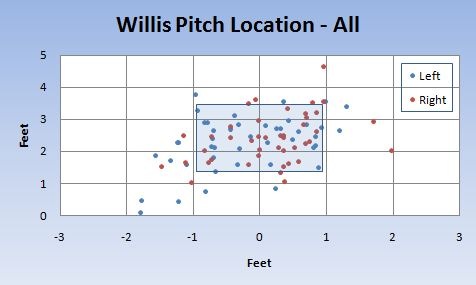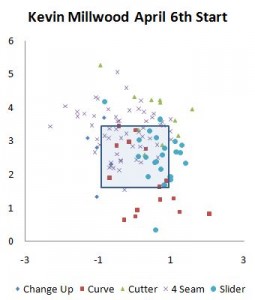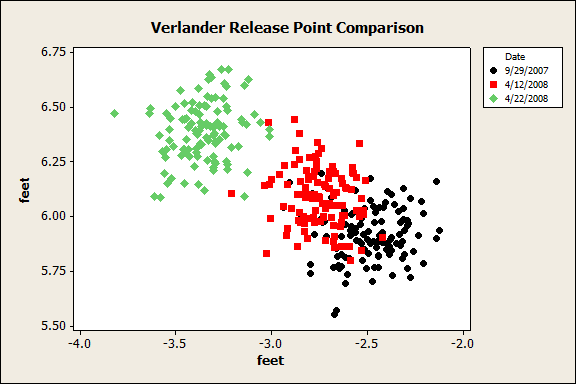Jeremy Bonderman has had a very long road back from the surgery he underwent to correct thoracic compression outlet syndrome. There was hope he’d be back in the rotation this year, but his spring became very extended and he didn’t make his first appearance until June 8th – and he was crushed. It was back to the minors and more rest and rehab, but with the rosters expanded Bonderman is back as a reliever, and the pitch f/x data is promising…so far.
When Bonderman made his June start, his pitches didn’t behave in the way they had in the past. His velocity was down. His fastball didn’t have the same arm side run. His slider wasn’t as tight and was more of a sweeping pitch. The particulars (via Brooks Baseball) were:
| Pitch | Count | Speed | Horiz Move | Vert Move |
| FF | 48 | 89.59 | -6.66 | 8.71 |
| FT | 5 | 89.16 | -8.16 | 6.25 |
| SL | 22 | 82.44 | 1.32 | 3.25 |
| CH | 10 | 83.69 | -7.13 | 8.32 |
Let’s fast forward to his latest 2 outings. The results have certainly been better, but what about the stuff?
| Pitch | Count | Speed | Horiz Move | Vert Move |
| FF | 23 | 91.60 | -9.00 | 8.55 |
| FT | 3 | 91.03 | -10.02 | 6.31 |
| SL | 10 | 84.13 | -0.87 | 1.57 |
We see that his velocity is up about 2mph across the board. The fastball has a couple more inches of arm side run and the slider has an inch and a half more drop. This all seems to be good and much more in line with Bonderman’s past pitch f/x numbers.
I’m going to skip the 2008 numbers where he was clearly hurting and couldn’t maintain his velocity. This clouded pitch classification data greatly. Instead I’ll put the numbers from 2007 up. These were harvested from Fangraphs.
| Pitch | Count | Speed | Horiz Move | Vert Move |
| FF | 92.1 | -8.6 | 7.7 | |
| FT | 88 | -10.7 | 9.8 | |
| SL | 84.1 | 0.5 | 1.6 | |
| CH | 84.2 | -8 | 8.3 |
The pitches from September (granted there are only 36 of them) look much more like the pitches from 2007 than the pitches from the June start. And yes, small sample sirens should be going off. And this is far from an ideal analysis. I’m certain there are pitch classification issues that are especially prevalent between the two seam (FT) and four seam (FF) fastballs. Plus the system was relatively new in 2007 and still being calibrated. Still, the results from this cursory analysis are encouraging.


